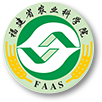Abstract:
Chungui tea
(
Camellia sinensis) is a new oolong teavariety bred from the natural hybrid progenies of Huangdan tea using the singleplant breeding method. It has a unique flowery fragrance, which wasSDE-extracted, and the aromatic components analyzed by the comprehensive 2D gaschromatography coupled with time-of-flight mass spectrometry (GC×GC-TOFMS). Atotal of 458 aromatics were identified that included 28 enols, 27 alcohols, 21olefine aldehydes, 28 aldehydes, 33 ketenes, 29 ketones, 12lactones, 37 esters, 9 allylesters, 72 alkanes, 73 alkanes,45 aromatic hydrocarbons, 7 oxygen heterocyclic compounds, 10 nitrogen heterocyclic compounds, 3 sulphur compounds, 8 organic acids, 3 amines, 5 ethers, 7phenols, and one alkynes. The relative contents of the major compounds,alkanes, enols, aldehydes, nitrogen heterocyclic compounds, and olefins, were21.35%, 11.61%, 9.94%, 9.81%, and 9.51%, respectively. There were 43 aromacompounds accounting for less than 0.5% of the total amount of volatiles, thepredominant ones being undecane(8.86%), indole(8.2%), phenylethanol (3.03%),6-methyl-5-heptane-2-enone (2.74%), dehydroalinalool (2.71%), 1-octene-3-ol(2.38%), ocimene (2.36%), benzaldehyde (2.36%), phenylacetaldehyde(2.29%), 1,3,7-trimethyl-trans-4,8-dicaldehyde(2.01%), 3,7,11-trimethyl-1,6,10-dodecatrien-3-ol(1.89%),2-pentyl-furan(1.69%), (E,E)-2,4-heptadienal(1.4%), linalool(1.06%) and so on. Thesecompounds such as indole, phenylethyl alcohol, 6-methyl-5-hepten-2-enone, 1,5,7-octatrien-3-ol,3,7-dimethyl-1-octen-3-ol, 1,6,10-dodecatrien-3-ol,3,7,11-trimethyl- (E,E)-2,4-heptadienal,linalool, ocimene and benzene acetaldehyde, 2-pentyl-furan, hexanal,acetophenone, benzyl alcohol, 1-pentene-3-ol, cis-2-heptanal, 2-heptanone,butanoic acid, 2-methyl-2-phenylethyl ester, α–farnese and so on, whichrelating to the floral, fruity and sweet fragrance that were deemed to have adirect impact on the aroma quality of Chungui oolong tea.




 下载:
下载: